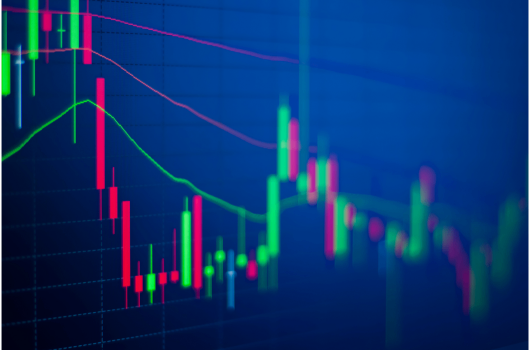How to measure inflation?
Economic commentary by Jakub Seidler, Chief Economist of the CBA

How to measure inflation? A small, but ultimately relatively long, educational window given the frequent discussions on how to view price developments. To illustrate, using the prices of a fictional commodity, where the evolution of prices has deliberately been quite dynamic over the years, see the figure and diagram below, and examples of inflation in the country.
Option 1) we compare the year-on-year evolution in a given month. This is the figure that is published by the statistical office every month as the "headline" inflation figure. Why do we look at the year-on-year comparison? Because a number of items in the consumer basket have seasonal trends - they always fall in certain months of the year and always rise in others (for example, fruit and vegetable prices, holiday prices, education prices, etc). By looking at the year-on-year trend, we "filter out" the seasonality because we are comparing two identical months in the year in which the item is either always higher or always lower. This year-on-year inflation in the Czech Republic was 6.9% in December 2023. From an analytical perspective, the number can be adjusted for the effect of the Savings Tariff, which administratively reduced inflation in late 2022, and therefore then increased it year-on-year in late 2023. Whether the Savings Tariff should have been captured in inflation in this way, we leave aside. Official year-on-year inflation is 6.9% in December, and trying to filter out the impact of the benchmark base is an analytical exercise to show what year-on-year inflation would look like without the administrative impact at the end of the year, and that it would continue to fall in the last quarter of 2023.
Option 2) the so-called year-to-date option, that is, from the beginning of the year to a given date. Using the example of inflation in the Czech Republic: year-on-year inflation in July was 8.8%, but price growth from the beginning of the year, or the end of 2022, was 7.7%. Similarly, we could look at price growth from January to July, i.e. look at the January jump in prices, then we would conclude that prices from the end of January to July grew "only" 1.6%, and that most of the price growth in 2023 was concentrated in January 2023 (and about half again due to the unwinding of the Savings Tariff).
Option 3) The year-on-year price growth in December 2023 is also the year-to-date price growth. It tells us how prices have risen over the course of 2023, but the basis for comparison is just the price at the end of 2022.
Option 4) average year-on-year price growth year-to-date. i.e. we compare average price growth from the start of 2022 to October, for example, with average prices from January to October 2023.
Option 5) average year-on-year price growth in 2023 or average annual inflation rate. Compare the average price of 2022 to the average price of 2023. This is a figure of 10.7% in the case of the CR in 2023. This inflation rate is of course a lagged indicator of "current inflationary pressures", but these are tracked by other views and metrics. However, it is an average price increase that takes into account the average prices in a given year compared to the average prices of the previous year, not just the price at the end of the period under review. We look at the year-on-year GDP growth in a given quarter, but we are also interested in the full-year GDP growth, which takes the average of the whole year).
Option 6) Month-on-month price developments. Gives us the quickest picture of how price is evolving. However, we need to take into account that a number of items in the consumer basket have strong seasonality. That is, they always rise strongly between some months and fall strongly between others. If we did not adjust the figure for this seasonality, conclusions based on a single observation would then be biased. This is why economists and the central bank seasonally adjust month-on-month inflation to assess inflationary pressures. And to avoid relying on a single monthly observation, they often look at a three-month average of these inter-month inflations.
Inter-month inflation can then be annualized, i.e., converted into a year-over-year number (i.e., what year-over-year inflation would look like if prices rose the same as they did this month all year). However, if non-seasonally adjusted inflation is annualized, such an annualization will be very choppy and not very useful for analytical purposes. The CZSO reports month-on-month seasonally adjusted inflation, but without the effect of taxes and administrative prices. Such inflation represents roughly 80% of the consumer basket. As of October 2023, this annualized inflation is already below the 2% target. Using the example of the figure and the evolution of prices of a "fictitious" commodity. Traditionally, the prices of the commodity in question rise in April, so part of the month-on-month growth in April 2023 is normal seasonality, and only the rest is new growth in 2023.
There are a number of options for measuring price developments, i.e. inflation, for example, we could go ahead and look at price growth on a quarter-by-quarter basis, i.e. we would be looking at three-month averages, both in terms of year-on-year and quarter-on-quarter. We can also look at price growth over a longer period of several years, for example in the Czech Republic prices have risen by 35% from December 2019 to December 2023. So there is not just one right way and all views have their pros and cons and are used in different situations. However, the average annual inflation rate is seen as Option 5)